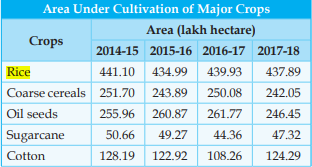Important Facts For Prelims
Ikki Jathre
- 17 Dec 2022
- 5 min read
Why in News?
Recently, a Kerala-based organisation, Thanal launched the Ikki Jathre or the Festival of Rice in tribal parlance whereby 300 climate-resilient varieties of traditional rice were planted at Panavally, Wayanad.
- Thanal initiated the Rice Diversity Block (RDB) at Panavally under the Save Our Rice campaign in 2009, with a collection of 30 varieties of rice which now expanded to 300.
What is Ikki Jathre?
- The initiative aims to sensitise people to the significance of conserving traditional crops that have the ability to withstand harsh climatic conditions.
- The festival also sets the stage for knowledge sharing and co-creation of knowledge between tribal farmers and experts.
- For the RDB, most of the varieties were collected from Kerala, Karnataka, Assam, Tamil Nadu, Arunachal Pradesh, Maharashtra and West Bengal.
- Also, there are three traditional rice varieties from Vietnam and Thailand.
What is Save Our Rice Campaign?
- About:
- Save our rice campaign is a people’s movement to protect the diverse rice cultures, knowledge, and ensure food sovereignty.
- In India, it started in 2004, and empowers communities build sustainable food security and livelihood.
- Functions:
- Establishing community RDBs and seed banks, conserving and promoting indigenous varieties of paddy seeds.
- Creating awareness about value of rice diversity among urban consumers.
- Facilitating adoption of agro-ecological farming in rice ecosystems, and encouraging farmers, states and local governments to adopt indigenous seeds.
- Enabling active discussions in the media about indigenous seeds and agro ecological farming.
What are the Key Facts About Rice?
- Rice is a staple food for most of the population in India.
- It is a kharif crop which requires high temperature, (above 25°C) and high humidity with annual rainfall above 100 cm.
- In the areas of less rainfall, it is grown with the help of irrigation.
- In southern states and West Bengal, the climatic conditions allow the cultivation of two or three crops of rice in an agricultural year.
- In West Bengal farmers grow three crops of rice called ‘aus’, ‘aman’ and ‘boro’.
- About one-fourth of the total cropped area in India is under rice cultivation.
- Leading Producer States: West Bengal, Uttar Pradesh, and Punjab.
- High Yielding States: Punjab, Tamil Nadu, Haryana, Andhra Pradesh, Telangana, West Bengal and Kerala.
- India is the second-largest producer of rice after China.
UPSC Civil Services Examination, Previous Year Questions (PYQs)
Q1. With reference to the cultivation of Kharif crops in India in the last five years, consider the following statements: (2019)
- Area under rice cultivation is the highest.
- Area under the cultivation of jowar is more than that of oilseeds.
- Area of cotton cultivation is more than that of sugarcane.
- Area under sugarcane cultivation has steadily decreased.
Which of the statements given above are correct?
(a) 1 and 3 only
(b) 2, 3 and 4 only
(c) 2 and 4 only
(d) 1, 2, 3 and 4
Ans: (a)
- Hence, statements 1 and 3 are correct, and statements 2 and 4 are not correct. Therefore, option (a) is the correct answer.
Q2. Consider the following crops: (2013)
- Cotton
- Groundnut
- Rice
- Wheat
Which of these are Kharif crops?
(a) 1 and 4
(b) 2 and 3 only
(c) 1, 2 and 3
(d) 2, 3 and 4
Ans: (c)
Q3. Among the following, which one is the largest exporter of rice in the world in the last five years? (2019)
(a) China
(b) India
(c) Myanmar
(d) Vietnam
Ans: (b)
Q4. System of Rice Intensification" of cultivation, in which alternate wetting and drying of rice fields is practised, results in: (2022)
- Reduced seed requirement
- Reduced methane production
- Reduced electricity consumption
Select the correct answer using the code given below:
(a) 1 and 2 only
(b) 2 and 3 only
(c) 1 and 3 only
(d) 1, 2 and 3
Ans: (d)
Exp:
- The "Rice Intensification System" of agriculture, in which the paddy fields are alternately cleaved and dried, the main objective of this method is less requirement of seed, less production of methane and less consumption of electricity.
- Hence option (d) is correct.
Q5. Among the following crops, which one is the most important anthropogenic source of both methane and nitrous oxide? (2022)
(a) Cotton
(b) Rice
(c) Sugarcane
(d) Wheat
Ans: (b)







